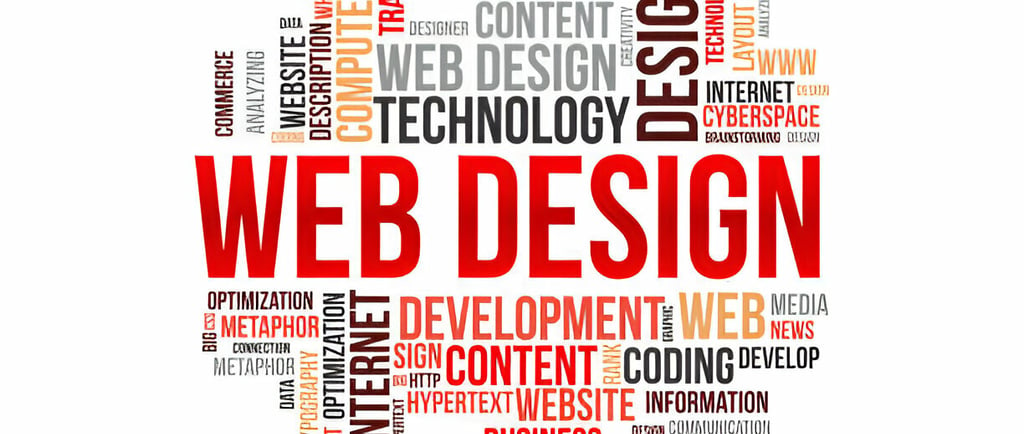Call Us Today! 503-895-5745
Crafting Seamless Digital Experiences: The Indispensable Power of UI/UX Design
WEB
6/21/20255 min read


In today's fiercely competitive digital arena, simply launching a functional website or a feature-rich application no longer guarantees success. Modern users demand more than just utility; they expect intuitive, enjoyable, and utterly effortless interactions with every click and tap. This is precisely where the transformative power of UI/UX design truly shines. Far beyond mere aesthetics, UI/UX design is a holistic discipline dedicated to crafting an entire user journey that not only anticipates needs but actively solves problems, fosters delight, and ultimately, cultivates enduring loyalty.
Let's delve deeper into what UI/UX design truly entails and why it has become an absolute non-negotiable for any successful digital product in our current landscape.
UI vs. UX: Deconstructing the Dynamic Duo
While the terms User Interface (UI) and User Experience (UX) are frequently used interchangeably, they represent distinct yet intricately interwoven disciplines that form the bedrock of compelling digital products:
User Experience (UX) Design: This is the foundational, overarching discipline that concerns itself with the entire journey a user undertakes when interacting with a product. It's about profoundly understanding user behaviors, motivations, pain points, and goals. UX designers meticulously conduct in-depth research, develop detailed user personas, meticulously map out user flows, and rigorously test prototypes to ensure the product is not only useful and usable but also truly desirable. Think of UX as the invisible, strategic architecture that underpins every interaction, ensuring the experience is logical, efficient, and deeply satisfying. It's about how it feels to use the product.
User Interface (UI) Design: This is the tangible, visual layer of interaction – what the user sees and directly interacts with. UI designers are the visual architects, responsible for all the graphical and interactive elements of a product. This includes the meticulous selection of typography, color schemes, and icon design; the precise arrangement of layouts; the careful crafting of buttons and forms; and the thoughtful implementation of animations and transitions. Their paramount goal is to ensure the interface is visually appealing, consistent across all touchpoints, and intuitively easy to navigate. UI is the expressive, visible layer that breathes life into the UX vision. It's about how it looks and interacts.
In essence, UX meticulously defines the user's journey and interaction strategy, while UI painstakingly designs the aesthetic and functional vehicle for that very journey. A brilliantly conceived UX can falter due to a cumbersome UI, and conversely, a visually stunning UI can't salvage a fundamentally flawed UX. The most successful digital products achieve a masterful harmony between both disciplines, creating experiences that are both beautiful and profoundly useful.
Why Prioritize Exemplary UI/UX Design?
A strategic investment in robust UI/UX design consistently yields substantial and quantifiable returns that directly impact your bottom line and brand reputation:
Elevated User Satisfaction and Delight: When users encounter a product that is effortlessly easy to use, visually pleasing, and demonstrably effective in addressing their specific needs, their satisfaction levels soar. Delighted users are significantly more inclined to remain loyal, actively engage with the product, and become enthusiastic advocates through valuable word-of-mouth referrals.
Optimized Conversions and Sustained Engagement: A meticulously designed interface expertly guides users towards desired actions, whether it's completing a purchase, subscribing to a newsletter, or submitting a crucial form. By meticulously smoothing out user flows and minimizing friction points, superior UI/UX leads directly to markedly higher conversion rates and deeper, more sustained user engagement.
Significant Reduction in Development Costs: Comprehensive UX research and meticulous prototyping conducted in the initial stages of a project can proactively identify and mitigate potential usability issues and design flaws before any extensive and costly coding commences. This foresight prevents expensive redesigns, rework, and re-development efforts further down the development pipeline.
Fortified Brand Identity and Recognition: Consistent, thoughtful, and aesthetically pleasing UI design plays a pivotal role in reinforcing your brand's unique personality, values, and messaging. A memorable and profoundly positive user experience leaves an indelible impression, fostering genuine brand loyalty and recognition in a crowded market.
Decisive Competitive Advantage: In today's saturated digital marketplaces, genuinely superior UI/UX can serve as the ultimate differentiator. Products that are truly delightful, intuitive, and efficient to use invariably stand head and shoulders above the competition, capturing a larger share of the target audience.
The Integral Role of "Bootstrap" in Modern UI/UX Development
When it comes to efficiently and effectively constructing the foundational visual components of a user interface, modern front-end frameworks are indispensable. Among these, one of the most perennially popular and widely adopted frameworks that significantly empowers UI developers is Bootstrap.
Bootstrap is a free, open-source CSS framework explicitly engineered for responsive, mobile-first front-end web development. It furnishes a comprehensive collection of pre-designed HTML and CSS-based templates for critical interface components such as typography, forms, buttons, navigation bars, cards, carousels, and much more, often complemented by optional JavaScript extensions.
Here's an expanded look at how Bootstrap profoundly contributes to contemporary UI/UX design and development workflows:
Unparalleled Speed and Efficiency: "Bootstrap" provides a rich library of pre-built, production-ready components and a highly flexible, responsive grid system. This empowers designers and developers to rapidly prototype, iterate, and build sophisticated UIs without the prohibitive need to construct every element from scratch. This dramatically accelerates the entire development lifecycle, freeing up valuable time for teams to concentrate on the unique and innovative aspects of their user experience.
Seamless Responsiveness and Adaptability: With its unwavering mobile-first philosophy baked into its core, "Bootstrap" inherently simplifies the process of creating designs that fluidly adapt and render flawlessly across an expansive array of devices and screen sizes – from the smallest smartphone to the largest desktop monitor. This responsive design capability is a critical facet of exceptional UX, guaranteeing a consistent, high-quality experience regardless of the user's chosen device.
Ensured Consistency and Predictability: By leveraging Bootstrap's standardized, well-documented components, designers can effortlessly ensure a cohesive and consistent look and feel across disparate pages, features, and even different applications within a product ecosystem. Consistency in UI design directly translates to enhanced usability, reduced cognitive load for the user, and a more predictable, reassuring user experience.
Robust Customization Capabilities: While "Bootstrap" offers powerful out-of-the-box solutions, it is also engineered for extensive customization. Designers and developers can easily override default styles, seamlessly integrate their unique brand identity and bespoke design elements, and extend existing components to meet highly specific aesthetic and functional requirements. This ensures distinctiveness while still harnessing the immense efficiency and reliability of the framework.
Enhanced Accessibility Features: Crucially, "Bootstrap" incorporates features and adheres to guidelines that assist developers in building more accessible websites and applications. This includes semantic HTML, keyboard navigation support, and ARIA attributes, addressing vital ethical and practical considerations in contemporary UI/UX design, ensuring products are usable by the widest possible audience.
Designing for a User-Centric Future
UI/UX design is not a static endeavor but rather a dynamic, iterative process of continuous understanding, meticulous design, rigorous testing, and insightful refinement. It is never a one-time task but an unwavering, ongoing commitment to truly placing the user at the absolute heart of every single decision made throughout a product's lifecycle. By intimately understanding the profound symbiotic relationship between UI and UX, and by strategically leveraging powerful, efficient tools like Bootstrap for rapid, responsive, and robust interface development, businesses can craft digital experiences that not only resonate deeply but also actively engage and consistently delight their users. This holistic and user-centric approach is precisely what we champion and deliver at enter and post, where we believe that exceptional UI/UX is the cornerstone of every successful digital venture.
Contact Us
Socials
📞 USA: (+1) 503-895-5745
📞 Pakistan: (+92) 332-3480678
🏢 Head Office:
8449 SW Barbur Boulevard, Portland, OR 97219, USA
🏢 Back Office:
T9, Sohni Shopping Mall, Karimabad, Karachi 75950, Pakistan.
© Copyright 2025 | Developed By | Enter and Post LLC
